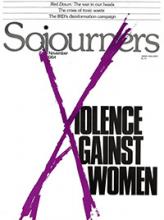Women in almost every culture and segment of society experience violence—from both individuals and institutions—that is directed specifically at them as women. In the United States, women of color—Hispanic, Afro-American, Asian, and Native American—experience violence that is specifically focused against them because of both their race and their gender. When misogynist violence combines with racism, the result is a unique and deadly threat to women of oppressed races.
Throughout the world, and especially in war, rape has been an instrument of racial conquest and oppression. Groups of men from one race have attacked women of races they deemed inferior. The toll has included Jewish women who were raped by German troops, Chinese women raped by Japanese soldiers, Bengali women raped by Pakistani soldiers, Native American women raped by white settlers, Afro-American women raped and terrorized by the Ku Klux Klan and other groups, and Vietnamese women raped by U.S. soldiers. These systematic attacks on women often included mutilation and murder, and they were part of a general pattern of terrorism against the population involved.
In these cases, the racist underpinnings of the assaults are beyond doubt. The attacks against women represented an extreme humiliation of the race to which they belonged. Women, in the minds of their attackers, were either property to be sabotaged or subhuman because they belonged to an enemy race.
Susan Brownmiller, in her book Against Our Will, quotes a Vietnam war veteran who in a panel discussion described the systematic rapes that were conducted by U.S. troops under the pretext of "searching" Vietnamese women. After the veteran described the mutilation and murder of one particular woman, the moderator asked him, "Did the men in your outfit, or when you witnessed these things, did they seem to think it was all right to do anything to the Vietnamese?" The veteran replied, "It wasn't like they were humans … They were a gook or a Commie and it was okay."
Read the Full Article
